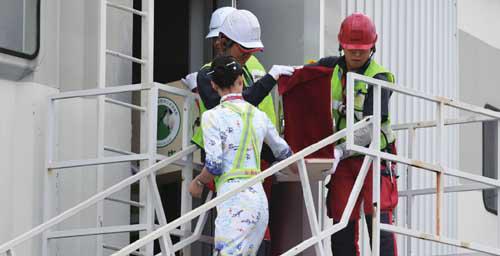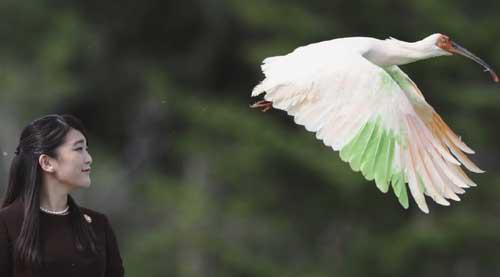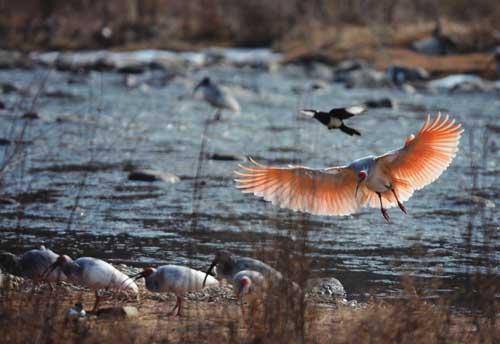BIRDS OF PEACE
By Ji Jing



A pair of crested ibises from China arrived at Japans Narita Airport in Tokyo on October 17 before being transferred to the Sado Japanese Crested Ibis Conservation Center in Niigata.
Chinese Premier Li Keqiang announced that China would gift a pair of crested ibises to Japan when he visited the country in May.
“The move has increased genetic biodiversity of crested ibises in Japan while signifying the best wishes of the Chinese people to the Japanese people,” said Li Chunliang, deputy chief of Chinas State Forestry and Grassland Administration, at the handover ceremony.
The two crested ibises, male Lou Lou and female Guan Guan, were both donated by the Louguantai Center for the Rescue and Breeding of Wild Animals in northwest Chinas Shaanxi Province. They will be moved to the Toki Forest Park on Sado Island after quarantine in the conservation center.
“Lou Lou and Guan Guan are both very healthy,” said Yoshinori Kaneko, a vet at the conservation center, after giving the birds a preliminary exam. According to Shouji Hasegawa, head of the center, they had made extensive plans for the arrival of the birds which included importing loaches from China to feed them.
Crested ibis is an iconic bird, deeply entrenched in Japanese history and culture. It is also regarded as a holy bird by the Imperial House of Japan. Throughout the 20th century, the number of crested ibises dropped sharply in Japan owing to the destruction of their habitats by human activities such as the excessive use of pesticides.
The Sado Japanese Crested Ibis Conservation Center was established in 1967. In 1981, only six crested ibises remained in Japan. Then in 2003, the species became extinct when the last of these six birds died.
For many years, crested ibises were also a rarity in China. Then, in 1978, ornithologists from the Institute of Zoology of the Chinese Academy of Sciences searched nine provinces and autonomous regions before discovering seven crested ibises in the wild in Shaanxi. After the implementation of preservation strategies, the number exceeds 2,600.
Cooperation between China and Japan to protect the species started in 1985 when they launched a joint plan.
In 1998, China gave two crested ibises to Japan, a highly symbolic gesture given their scarce nature. Three other birds were gifted to Japan for artificial reproduction later. At present, there are around 550 crested ibises in Japan, 372 of which live in the wild and populate Sado Island.

Saburou Shinagawa, a volunteer instructor at the conservation center, said, “We often say it is because of the five crested ibises sent by China that we have 550 birds now. All of the birds are descendants of those five.”
Reciprocal efforts from Japan included the protection of the habitats of crested ibises in China through governmental and non-governmental projects.
Crested ibises have become a pull factor for Sado Island and Niigata at large. Local souvenirs are made in the shape of the bird and local farmers promote their rice by highlighting the vitality of the area by the presence of the birds. Hundreds of thousands of tourists visit the island to see the precious birds each year.
Hasegawa said he was thrilled to hear the news that China would gift Japan with crested ibises once again. He expressed his gratitude to China for helping to increase the genetic diversity of crested ibises in Japan.
“Crested ibises have become a bridge of friendship between China and Japan, and we hope there will be more such exchanges in the future,” said Kaneko.


